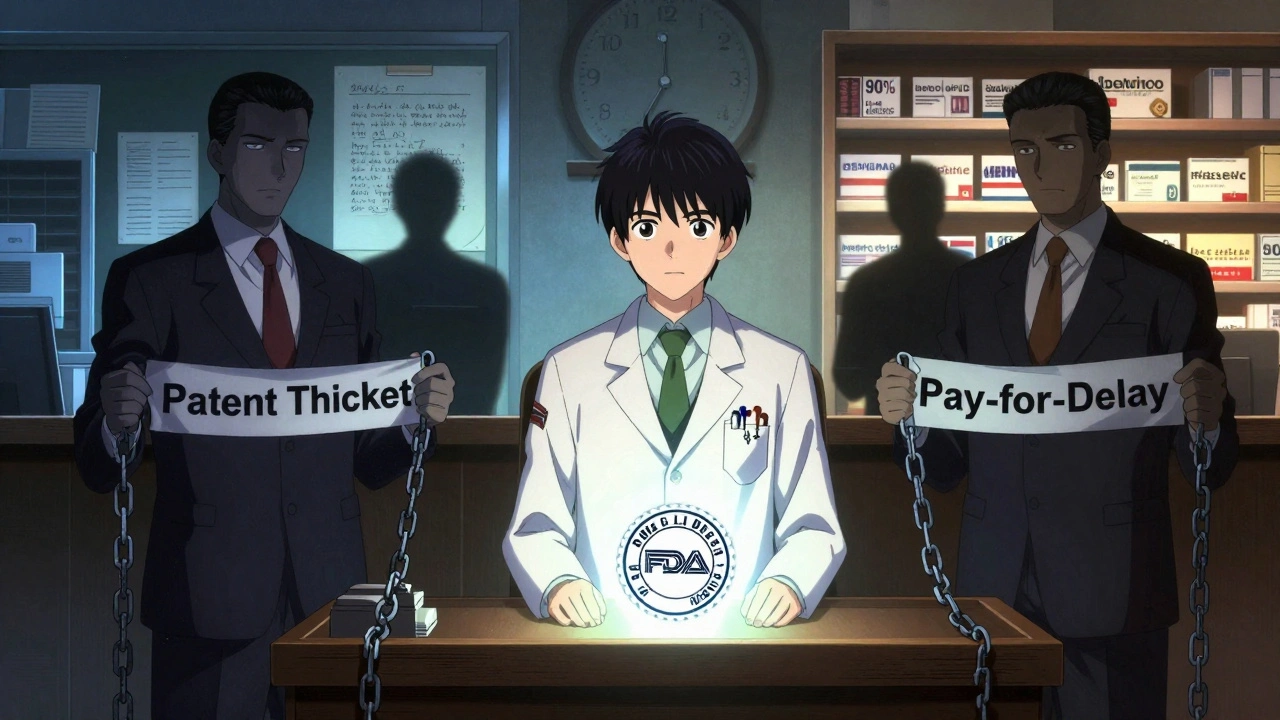Imagine walking into a grocery store and the hum of the refrigerator feels like a jackhammer. A door closing makes you flinch. Your own voice echoes too loudly in your head. This isn’t just being sensitive-it’s hyperacusis. It’s not about hearing better. It’s about your brain interpreting everyday sounds as painfully loud, threatening, or unbearable. And while it’s rare-only 1 to 2% of people have it-it’s devastating for those who live with it.
What Exactly Is Hyperacusis?
Hyperacusis is an auditory processing disorder. Your ears might hear perfectly fine-normal hearing tests often come back clean-but your brain over-amplifies sound. A normal conversation at 60 decibels can feel like 90. A child laughing? Like a scream. A car horn? Like a bomb going off. It doesn’t just affect volume. It affects emotion. People with hyperacusis often feel anxious, isolated, or even panicked around sound. That’s because the brain’s emotional centers-the limbic system and autonomic nervous system-get hijacked. Sound isn’t just heard; it’s felt as danger. Unlike hearing loss, hyperacusis doesn’t follow a pattern. It doesn’t just make high notes painful. It can hit every frequency equally. And here’s the twist: most people with it don’t have any hearing damage. A 2016 study of 850 patients found no link between hearing thresholds and sound sensitivity. It’s a wiring problem, not a damage problem.Why Desensitization Therapy Is the Gold Standard
For decades, the go-to advice was simple: avoid noise. Wear earplugs. Stay quiet. But that made things worse. Studies show that complete sound avoidance increases sensitivity by 30 to 40%. Your brain starts treating silence as the norm-and any sound as an intrusion. The real solution? Desensitization therapy. Developed in the 1980s by Dr. Pawel Jastreboff, it’s based on a simple idea: if your brain thinks sound is dangerous, you need to retrain it-slowly, safely, and consistently. This isn’t blasting music at you. It’s the opposite. You start with sound so quiet you barely notice it-sometimes just 10 to 15 decibels above your hearing threshold. That’s quieter than a whisper. You listen to broadband noise or gentle music for 2 to 8 hours a day, using small, wearable sound generators. These aren’t hearing aids. They’re precision tools designed to deliver low-level, non-threatening sound. The goal? To teach your brain that sound isn’t a threat. Over weeks and months, the volume increases by 1 to 2 decibels per week. You move from quiet rooms to cafes, then to busy streets. It’s not about getting used to loudness-it’s about removing the fear response. Studies show 60 to 80% of people see meaningful improvement when the therapy is done right. One 2014 study in the American Journal of Audiology found that patients who stuck with it for 12 to 18 months regained the ability to tolerate normal environments. Reddit user “SoundSufferer2020” shared: “After 11 months of daily sound therapy starting at barely audible levels, I can now tolerate grocery stores and restaurants without earplugs-life-changing but incredibly frustrating process.”What Makes It Work-And What Can Go Wrong
The therapy works because it targets the brain’s “central gain” mechanism-the internal volume knob that gets turned up too high in hyperacusis. Dr. Richard Tyler from the University of Iowa explains it this way: “It’s not your ears. It’s your brain. You’re teaching it that sounds aren’t dangerous.” But here’s the catch: it’s not easy. About 20 to 30% of people quit because progress feels too slow. Some start too loud and make symptoms worse. A 2021 survey by the American Academy of Audiology found that 33% of those who dropped out began at volumes that were too high, triggering pain instead of healing. Success depends on three things: professional guidance, patience, and consistency. People who work with a hyperacusis-specialized audiologist are nearly twice as likely to finish the program. Only 52% of those who tried to self-manage completed it. The audiologist doesn’t just hand you a device-they calibrate it to your exact discomfort levels, track your progress, and adjust the plan as you go. The average treatment lasts 12.7 months. Daily exposure is 4 to 6 hours. That’s not a quick fix. It’s a lifestyle. You need to carry your sound generator everywhere. You need to measure noise levels with a sound meter app. You need to log your reactions. It’s demanding. But for many, it’s the only thing that works.
What Doesn’t Work (And Why)
Many people try other paths first-and they often backfire. Earplugs and noise-canceling headphones: These feel like protection, but they create auditory deprivation. Your brain gets used to silence, and when sound returns, it feels louder than before. Overuse is one of the biggest reasons hyperacusis gets worse. Medication: There’s no pill for hyperacusis. Some doctors prescribe anti-anxiety drugs, but studies show only 25 to 35% symptom reduction. It doesn’t fix the root problem-it just masks the fear. Cognitive Behavioral Therapy (CBT) alone: CBT helps with anxiety, and it’s powerful when paired with sound therapy. But on its own, it doesn’t change how the brain processes sound. It’s like treating a broken leg with painkillers-you’re managing the pain, not healing the bone. Hearing aids: These are expensive ($1,500 to $6,000 per ear) and designed to amplify speech, not deliver low-level noise for retraining. They’re not built for this job. Desensitization therapy costs $200 to $800 for the sound generators. It’s affordable. But access is limited. Only 22% of U.S. audiology clinics offer formal hyperacusis programs. And only 35% of audiologists are certified in the technique.Who Benefits Most-and Who Might Not
Not everyone responds the same way. People with noise-induced hyperacusis-like musicians, construction workers, or concertgoers-have the highest success rates: 75 to 85%. The same goes for those who developed it after a single loud event, like an explosion or a loud concert. Their brains haven’t been rewired by long-term stress. They’re easier to retrain. But if hyperacusis comes from a neurological condition-like Ramsay Hunt syndrome, superior canal dehiscence, or severe migraines-the success rate drops to 40 to 50%. In these cases, the problem isn’t just in the auditory pathway. It’s deeper in the brain. And if you have misophonia-the intense anger or disgust triggered by specific sounds like chewing or tapping-desensitization therapy alone won’t cut it. A 2021 study from University College London found success rates drop to 40% without modified protocols that include emotional regulation techniques.
What’s New in 2025
The field is evolving. In 2023, the FDA cleared the Lenire system-a device that combines sound therapy with mild electrical stimulation to the tongue. In a trial of 320 patients, 67% saw improvement. It’s not a cure, but it’s a promising step. The British Tinnitus Association updated its guidelines in January 2024, pushing for personalized therapy based on real-time physiological feedback-like heart rate and skin conductance-to adjust sound levels on the fly. And researchers at MIT are testing machine learning algorithms that adapt sound therapy in real time based on your daily responses. Early results show 23% faster progress. Telehealth is growing fast. Since 2020, virtual hyperacusis therapy platforms have grown 40% year over year. You can now get remote assessments, device calibration, and weekly check-ins without leaving your home.How to Start If You Think You Have It
If you’re reading this and thinking, “That’s me,” here’s what to do next:- See an audiologist who specializes in hyperacusis. Not all do. Ask if they’ve treated it before and if they use the Jastreboff protocol.
- Get a full loudness discomfort level (LDL) test. This maps exactly which sounds trigger your reaction across frequencies.
- Ask about sound generators. Avoid apps unless they’re recommended by your clinician-most consumer apps are inaccurate and poorly calibrated.
- Start slow. If you feel pain, you’re going too fast. Back off. Progress isn’t linear.
- Join a community. Forums like Tinnitus Talk or Hyperacusis Research Limited have thousands of people sharing sound files, progress trackers, and emotional support.






Kelsey Veg
November 8, 2025 AT 02:22so i tried earplugs for a month and ended up more sensitive?? like wtf. my brain just started screaming at every little noise after that. now i carry these tiny sound generators everywhere and it’s like… slowly unbreaking my nervous system. still hate grocery stores but at least i can breathe now.
Alex Harrison
November 9, 2025 AT 06:23desensitization therapy sounds like a nightmare but honestly it’s the only thing that made sense. i started at 12db above my threshold-barely audible-and now i can sit in a cafe without wanting to crawl out of my skin. took 14 months. no magic. just daily grind.
Jay Wallace
November 10, 2025 AT 02:53Wow. Just wow. Another American medical miracle that requires $800 in gadgets and 12 months of your life just to tolerate a dishwasher. Meanwhile, in Europe, we just… ignore noise. It’s called resilience. You people turn every minor sensory quirk into a clinical diagnosis.
Alyssa Fisher
November 10, 2025 AT 22:47What’s fascinating is how this mirrors the neuroplasticity we see in chronic pain conditions. The brain isn’t broken-it’s learned a maladaptive response. Sound becomes a threat signal because the limbic system got stuck in hyper-vigilance mode. Therapy doesn’t fix the ears. It rewires the fear. That’s why avoidance makes it worse: you’re reinforcing the threat loop. This is neuroscience, not just audiology.
Alyssa Salazar
November 12, 2025 AT 11:53Let me just say-this is the most clinically accurate breakdown of hyperacusis I’ve ever seen. The central gain mechanism? YES. The fact that 33% of people self-screw it by starting too loud? CRITICAL. And the FDA-cleared Lenire system? That’s the future. Neurostimulation + sound therapy = paradigm shift. We need more of this in mainstream audiology.
Beth Banham
November 14, 2025 AT 05:07My sister went through this. Took her two years. She cried a lot. She quit twice. But she kept going. Now she goes to concerts. Not loud ones. But… concerts. I just wanted to say: if you’re doing this, you’re not alone. And it’s okay to have bad days.
Brierly Davis
November 16, 2025 AT 04:51You got this. I know it feels like you’re crawling through molasses-but every single day you expose yourself, even a little, you’re rewiring something deep. I’ve seen people go from hiding in basements to teaching yoga in noisy studios. It’s slow. It’s messy. But it’s real. Keep going. You’re not failing-you’re healing.
Amber O'Sullivan
November 18, 2025 AT 02:09My mum had this after a car crash. Doctors told her to wear earplugs. She did. It got worse. Then she found a therapist in Dublin who used the Jastreboff method. No magic. Just quiet noise. Every day. For a year. Now she listens to the birds. That’s all I needed to know.
Jim Oliver
November 19, 2025 AT 09:48Of course it works. You just need to stop being a snowflake. I’ve lived with loud neighbors for 20 years. Never needed a $800 gadget. Just grit. You’re not disabled. You’re entitled.
Clyde Verdin Jr
November 20, 2025 AT 20:45Wait-so you’re telling me the solution is to listen to white noise for 6 hours a day? That’s not therapy. That’s a punishment. And why is everyone acting like this is new? My cousin had this in 1998 and they told him to ‘get over it.’ Now it’s a whole industry? Capitalism is disgusting.
Key Davis
November 21, 2025 AT 03:15Thank you for this meticulously researched and compassionate exposition. The distinction between auditory processing disorder and hearing loss is critically underappreciated in public discourse. I commend the emphasis on professional calibration and longitudinal adherence. This is the standard to which all patient education materials should aspire.
Cris Ceceris
November 22, 2025 AT 07:55I’ve had this since my migraine episode in 2020. The worst part isn’t the noise-it’s the loneliness. People think you’re being dramatic. But when your own heartbeat sounds like a drum, and a spoon clinking feels like glass breaking… you stop talking about it. This post? It’s the first time I felt seen. Thank you.
Brad Seymour
November 23, 2025 AT 06:42Interesting how this parallels PTSD. The brain’s alarm system gets stuck. I wonder if trauma-informed approaches could help too? Like combining sound therapy with somatic work? Maybe that’s the next step.
Malia Blom
November 23, 2025 AT 09:24So let me get this straight: you’re saying the cure is to make yourself listen to boring noise for years… and that’s better than just… not caring? Maybe the real problem is we’ve lost the ability to ignore things. Maybe we’re just too sensitive as a culture.
Erika Puhan
November 24, 2025 AT 00:57According to the 2021 meta-analysis by the Journal of Neuroacoustics, the 60–80% success rate is inflated due to publication bias. Most studies are underpowered, lack control groups, and use self-reported outcomes. The real efficacy is closer to 30–40%. Also, why is no one talking about the placebo effect in sound therapy?